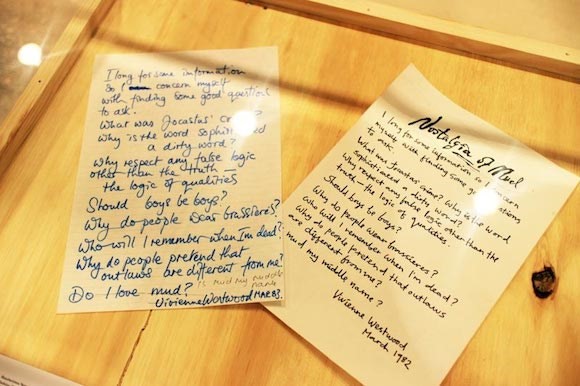Yvonne Gold, the make-up artist behind Vivienne Westwood's early collections, remembers the iconic A/W83 show
I was barely 15 years old when Malcolm McLaren and Vivienne Westwood opened their first shop, Let it Rock. I still remember buying a pair of cross-stitched, doeskin pointed brothel creepers. It was 1972, and The London Rock & Roll Show was about to happen at Wembley Stadium when Malcolm asked me to help them sell T-shirts – and that was the start of my work with them. The following year, I did my first job as a make-up artist with Helmut Newton and my career took off, but I continued to pop in, chat and purchase pivotal pieces as the shops changed styles – up until 1981, when they asked me to do the make-up for their first fashion show. Chatting transformed into a conceptual discussion about the philosophy of the Pirate Collection, the shop changed to Worlds End and we went on through the next eight seasons to the first mini-crini. I no longer had to shop, because we all got paid in clothes.
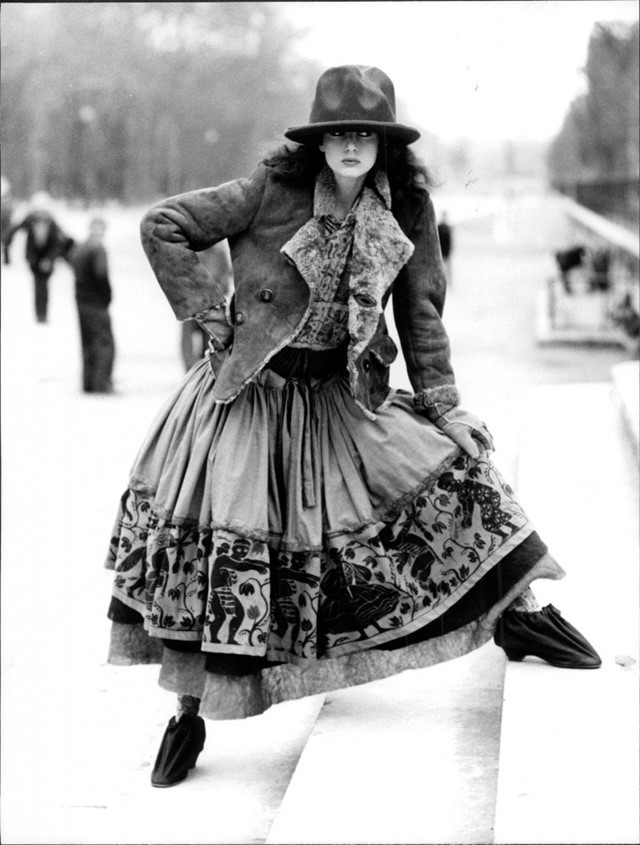
“Buffalo girls go round the outside, round the outside…” - Malcolm McLaren, 1982
And go round the outside was exactly what Vivienne and Malcolm did when they showed that first collection at Le salon de thé Angelina on the Rue de Rivoli. They were the first British designers to show in Paris since Mary Quant in 1963, and stood away from the dominant tents of sleek and sexy Parisian chic, somewhat like Rei Kawakubo and Yohji Yamamoto did when they debuted their monochromatic, monastic and minimalist collections the previous year.
As Malcom put it, the idea behind the A/W83 Nostalgia of Mud collection (a translation of "Nostalgie de la boue" from Tom Wolf's Radical Chic) was "to show in clothes and music that, in the post-industrial age, the roots of our culture lie in primitive societies.” Vivienne fused her encyclopedic historical costume knowledge with ethnic South and contemporary North American cultures. 'We want to get out of this island mentality, and relate ourselves to those taboos and magical things we believe we have lost." Malcolm added. It wasn’t primitive: it was pivotal and political. The Nostalgia of Mud collection fused tradition and technology; it broke all the rules.
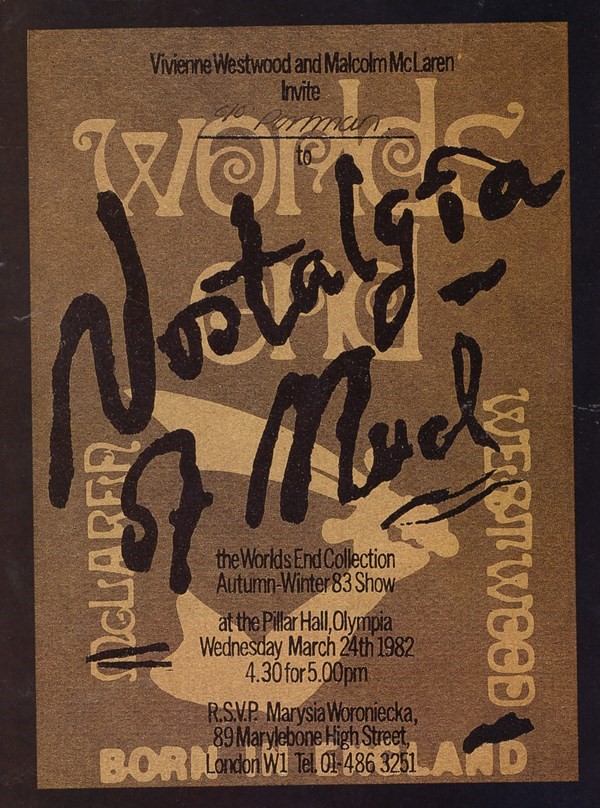
The Show
Firstly, the show was held at the Pillar Hall in London, its stark white stage illuminated by a finale of sparklers. Against Thatcher’s backdrop of tight, shouldered padded power suits, Vivienne showed soft tailoring: dropped, unstructured shoulders and raw seams. Matisse cutouts and a 1958 Folk Dance woodblock print on jersey and woven in wool, hand-dyed wadding, wooden beading, quilting and embroidery, sheepskin and satin. It came in a medley of muted, muddy shades: mixed chocolates, rusts, khaki greens, snow whites, ice blues, peachy, dusty pinks and lilacs. Buffalo girls wore hip-slung dirndl skirts over padded petticoats, with baby-sling-bags across their backs and hoodies topped with Buffalo hats, or T-shirt Grecian toga dresses with conical vintage satin bras worn over the top. This was pre-Gaultier and, for the first time, underwear became outerwear. The silhouettes of the collection changed both bodies and views – which Vivienne loved to do.
Five days later, the clothes arrived in black plastic bin bags and we did it all again, at Le salon de thé Angelina, against its opulent Belle Époque backdrop. Model Susie Bick squeezed down the tiny spiral staircase from the dressing room in a massive ‘Padi-Coat,’ ducking the chandeliers on the mini catwalk and walking to the premiere of Malcolm’s own pumping hip-hop. Paris had never seen or heard anything like it.
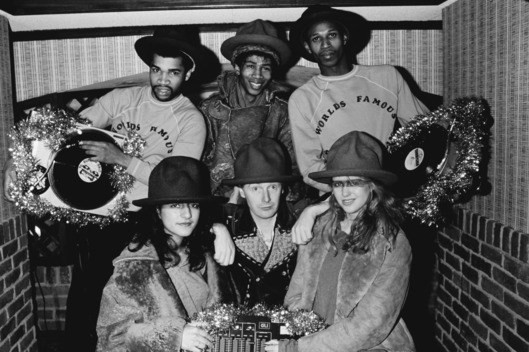
The People
Backstage, a mix of family and friends did everything: Vivienne’s sons Ben and Joe, Gene Krell (now the international fashion director of Japanese Vogue), jewellery designer Tom Binns. Creative vandal Nick Egan (who had designed the Nostalgia of Mud logo and invitation) helped Malcolm with the music and modeled, towering over heartthrob Nick Kamen who opened the show, heading up the convoy of models, Buffalo girls and friends who literally walked to the soundtrack of the 1978 movie Convoy. The concept or term ‘street casting’ didn’t exist back then, and the front row wasn’t celebrities but rather press and confused buyers from Bloomingdales, fashion dignitaries like Anna Piaggi from Vogue Italia and Vern Lambert, Michael and Gerlinde Costiff, Susanne Bartsch... plus, the Blitz Kids who bunked in.
I spent most of the show backstage, because it was just me and one assistant, with only seven minutes per face. The look was a two-toned rose and peach freshly fucked flush blush with mascara-less (unheard of) moody, hollowed eyes. Natural hair mingled with classical Greek headbands, braids and the occasional blonde, mud-caked dreadlock by Clifford.
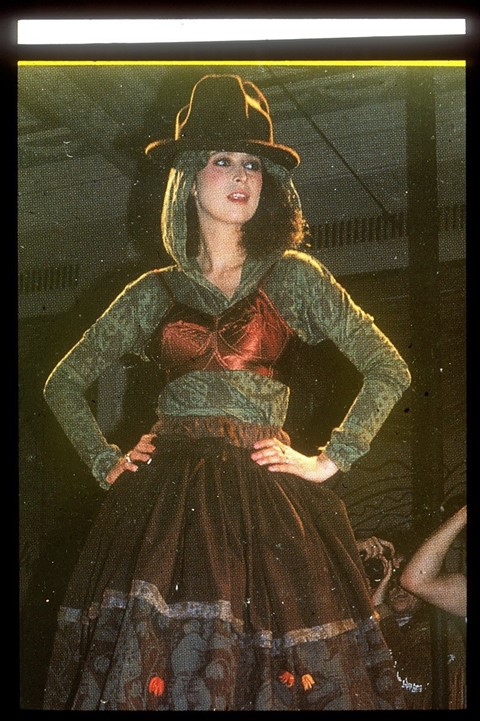
The Impact
The legacy of raw-edged, reversed-seamed sheepskin coats lives on as a classic, and wearing a hoodie under a tailored jacket or a bra as outerwear has become standard. The conceptual black painted strip mask is still seen on catwalks in infinite variations. Three and a half decades later, the iconic Buffalo hat has been revitalized by [musician] Pharrell, and you can find entire ensembles in the collections of international museums and individual collectors like Louis Vuitton's menswear designer Kim Jones keeping the Buffalo legacy alive.
Coincidently, the year following Nostalgia of Mud, Bob Marley released “Buffalo Soldier,” named after the black US Cavalry who fought in the 19th century 'Indian wars'. And, contrary to popular belief, in 1984 it was a Parisian nightclub’s crew of Afro-Caribbean security guards in their black bomber jackets, with a white embroidered ‘Buffle’ on the left over their hearts for love, who inspired stylist Ray Petri to make the movement international, by spreading ‘Buffalo’ across the back of his MA-1 flight jackets in English, while in Tokyo. Heading up a group of multi-racial model-muses, fashion photographers and creatives (including a young Naomi Campell and Neneh Cherry, whose hit single Buffalo Stance paid tribute to Ray’s philosophy), their aesthetic spread across the industry. Nick and Barry Kamen became Buffalo boys, and Barry continued to style Ray’s mix of utilitarian army and sports clothing, underwear, classic tailoring, decadent dandy and indigenous pieces asking the same question as Vivienne had: "Should boys be boys?"
